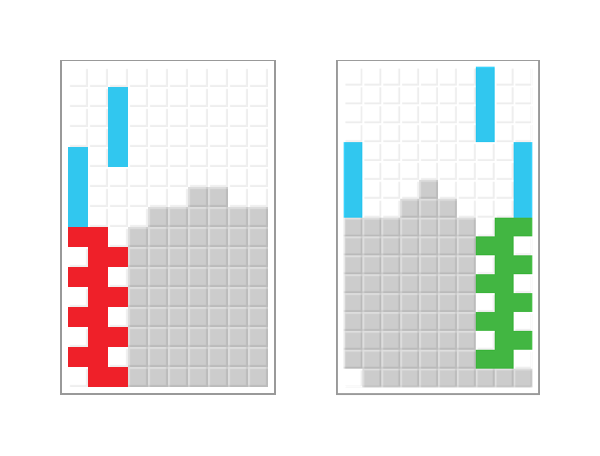015 — A Cascade Tetris friendship
(Jasdev ⇒ Justin, 8/31/20)
What’s the most interesting way you’ve met a friend? Still keep in touch with any of your Halo teammates?
— Justin, in letter #14.
I guess this is the video gaming chapter of Letters to J because my answer to the first question1 — following 013’s suit — is in a game I loved as a kid: Tetris (specifically, Tetris Worlds on the original Xbox).
I made friends with the #1 Cascade Tetris player on Xbox Live and over the course of hundreds of hours playing together, took me under his wing in becoming #2.
Tetris Worlds was an unassuming game. It came bundled with Xboxes at the time as a starter disk so the console wasn’t idle weight after unboxing. It packed both the classic variant of the game (i.e. pieces falling at an increasing pace in random order until the board lock jammed) and a series of arcade modes, one of which was dubbed Cascade Tetris.
This was our stomping ground.
Scoring in the cascade variant wasn’t based on lines cleared and instead tallied combinations — cascades — of cleared lines. In ordinary Tetris, it’s possible for blocks to float in space (e.g. after the fourth line from the bottom is cleared in the following image, the blue block is left hanging).

Gravity is turned on in Cascade Tetris. In the game type, that blue block would fall and you can use this to clear lines that then drop pieces above them to clear another (and another and … (…another)).
Here’s an example — the first clearing lets the I block cascade down to clear lines 2–9.

And like a Rubik’s Cube, there’s a strategy and competing with the best meant practicing it until it became a trance.
The strategy involved playing an ordinary game of Tetris on the left or right side of the board and leaving a three-block-wide gutter for a stack of Z or S blocks (colored red and green below). The watershed moment was teeing up two I blocks to start a cascade (imagine gravity iteratively clearing all the lines next to the gutter).

CRad01 taught me this and we’d rehearse the runbook alongside other line clears for months until we became good friends and eventually the top-ranked one-two punch. I never edged out his spot and while that probably irritated some part of teenage Jasdev, the Jasdev writing this letter is smiling. It wasn’t the classic “student becomes the teacher” scenario and instead “the student and teacher became…friends.” We’d talk through my incredibly complicated highschool and track practice life. And his in adjusting to post-deployment life as a young Army recruit.
We unfortunately fell out of touch when I went to university and stopped gaming (a decision I’m ever-tempted to reverse) — but I wonder what he’s up to these days. Or if he ever thinks back on that Tetris world we spent so much time in.
I found this pin while puttering around in The Strand one evening in ’18 and have since worn it on my messenger bag as a nod to that Cascade Tetris friendship.

Looking forward from then, a recent theme in therapy has been naming and unlearning habits that have taken root since my childhood days and aren’t quite serving me in today’s days. One I’ve been deconditioning — and this is probably no surprise to those who know me well — is…self-imposed perfectionism. It crops up in seemingly innocuous yet scattered ways:
- holding onto my completionism of reading every tweet in my timeline (typing this out now makes it clearer how unsustainable it is),
- reframing my relationship with messaging (I used to wait to reply to folks when I was in the “right headspace,” which led to messages piling up),
- and occasionally getting in my own head about not making a great first impression.
Are there any tendencies you’ve been trying to unlearn lately?
■
-
I’ll save the second for another letter. In short, yes! A Halo teammate eventually became my first-year university roommate. ↩